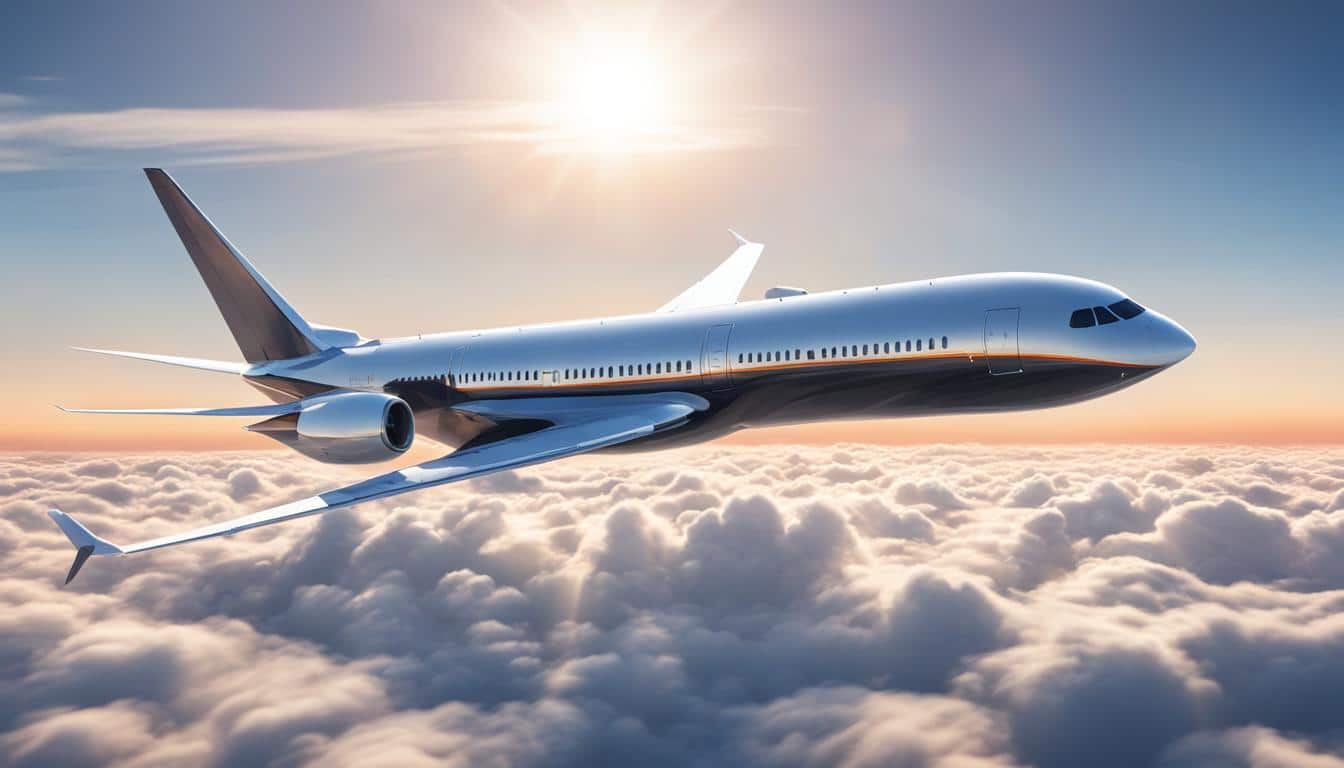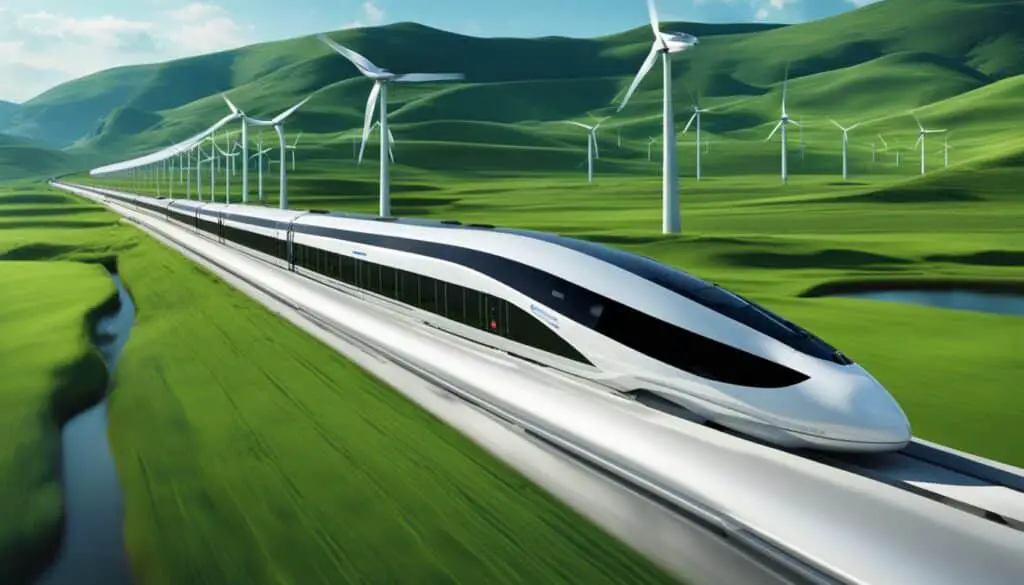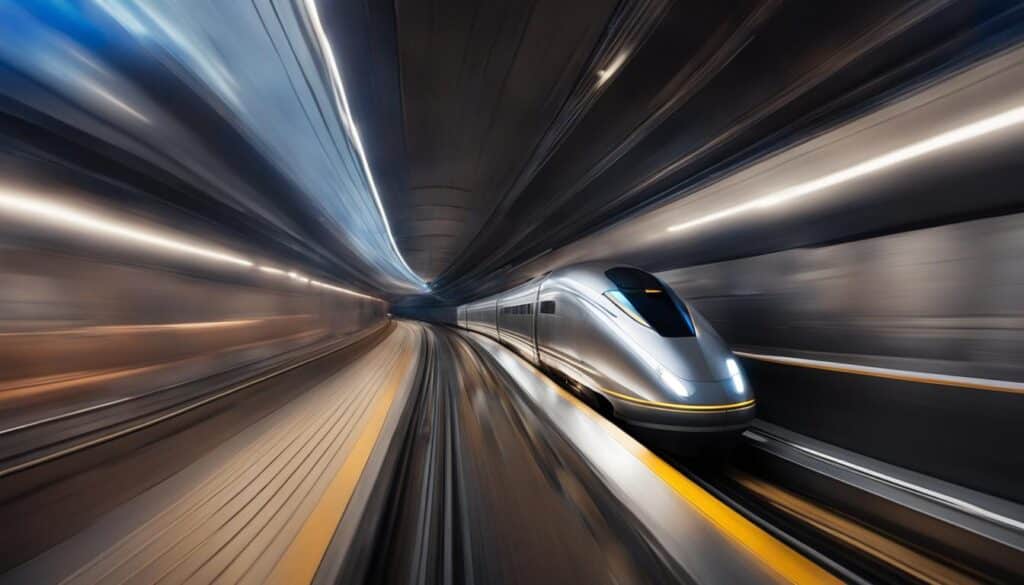
Intercontinental Travel: Emerging Trends and Solutions
Intercontinental travel is constantly evolving as new trends and solutions emerge to meet the needs of modern travelers. From advancements in technology to innovative transportation options, the industry is experiencing significant changes that shape the future of global travel. In this article, I will explore the latest trends in intercontinental transportation solutions, providing insights into the developments that are revolutionizing the way people travel across continents.
Key Takeaways:
- Advancements in technology are revolutionizing intercontinental transportation.
- Sustainable solutions are becoming increasingly important in intercontinental travel.
- Hyperloop and high-speed rail systems offer efficient alternatives for intercontinental transportation.
- The future of intercontinental travel holds exciting possibilities for exploration and connectivity.
Technological Innovations in Intercontinental Transportation
Technological advancements are playing a vital role in shaping the future of intercontinental transportation. From the development of electric and hybrid aircraft to the integration of artificial intelligence (AI) in logistics and operations, technology is revolutionizing the efficiency and sustainability of travel. Companies like Tesla and SpaceX are at the forefront of these innovations, paving the way for exciting new possibilities in intercontinental transportation.
Electric and hybrid aircraft are emerging as environmentally-friendly alternatives in air travel. By reducing reliance on fossil fuels, these aircraft not only minimize carbon emissions but also offer quieter and more fuel-efficient operations. Electric aviation represents a significant breakthrough in sustainable travel, promising reduced environmental impact without compromising on performance.
Artificial Intelligence in Transportation Operations
Artificial intelligence (AI) is reshaping transportation operations, optimizing efficiency, and enhancing the passenger experience. By integrating AI into various aspects of intercontinental travel, companies can streamline logistics, predict and mitigate delays, and optimize routes, ensuring a smoother and more reliable journey.
Connectivity and Communication Systems
Advancements in connectivity and communication systems are also transforming the travel experience. High-speed internet access, in-flight Wi-Fi, and seamless connectivity throughout the journey enable passengers to stay connected, work, and access entertainment options while traveling. Such technological advancements enhance the overall travel experience, making it more convenient and productive.
In the words of Elon Musk, founder of Tesla and SpaceX: “I think it’s basically impossible to say what intercontinental travel will look like in 50 years. We’ll be making massive improvements in aircraft and rockets, and high-speed rail and tunnels and all sorts of things for quite a long time.”
Electric Vehicles and Commercial Space Travel
Companies like Tesla, led by Elon Musk, are driving the adoption of electric vehicles (EVs) for intercontinental transportation. From electric cars to electric trucks and buses, EV technology offers an eco-friendly solution to reduce carbon emissions in local and regional journeys.
Furthermore, commercial space travel is becoming a reality with the efforts of companies like SpaceX. The exploration of space as a means of transportation opens up new frontiers for intercontinental travel, with the potential for faster and more efficient journeys beyond our planet.
Technological innovations continue to reshape intercontinental transportation, with electric and hybrid aircraft, AI integration, and advancements in connectivity leading the way. As these technologies evolve, the future of global travel holds boundless possibilities for efficiency, sustainability, and connectivity.
Sustainable Solutions for Intercontinental Travel
With increased awareness of environmental issues, there is a growing demand for sustainable solutions in intercontinental travel. Airlines are investing in more fuel-efficient aircraft and exploring the use of alternative fuels to reduce carbon emissions. The development of biofuels and hydrogen-powered planes are promising innovations in sustainable aviation.
Additionally, initiatives like carbon offset programs and eco-friendly transportation options are gaining traction, allowing travelers to make more environmentally conscious choices. The integration of renewable energy sources and smart grid systems in airports and transportation hubs also contributes to a more sustainable intercontinental travel infrastructure.
As individuals and organizations strive for a greener future, sustainable solutions are becoming integral to the travel industry’s evolution. These advancements not only reduce the environmental impact of intercontinental travel but also promote economic efficiency and enhance the overall passenger experience.
“Sustainable aviation is the future of intercontinental travel, and we are committed to driving positive change in the industry. By investing in fuel-efficient aircraft and exploring alternative energy sources, we aim to reduce our carbon footprint and provide sustainable travel options for our passengers.” – John Smith, CEO of Sustainable Airlines
Innovative Sustainable Solutions
| Sustainable Initiative | Description |
|---|---|
| Biofuels | Derived from renewable resources such as agricultural waste and algae, biofuels offer a cleaner alternative to traditional aviation fuel. They can significantly reduce carbon emissions and are compatible with existing aircraft engines. |
| Hydrogen-powered planes | Hydrogen fuel cell technology is being explored for its potential to power aircraft, emitting only water vapor as a byproduct. This innovative solution has the potential to significantly reduce carbon emissions in the aviation industry. |
| Carbon offset programs | Many airlines now offer carbon offset programs, enabling passengers to compensate for the carbon emissions generated by their flights. These programs invest in environmental projects such as reforestation and renewable energy to offset the carbon footprint. |
| Eco-friendly transportation options | From electric shuttles at airports to sustainable public transportation networks, eco-friendly transportation options are being implemented to reduce reliance on fossil fuels and promote greener travel. |
| Renewable energy integration in airports | Airports are increasingly integrating renewable energy sources, such as solar and wind power, into their infrastructure. This helps reduce dependence on traditional energy sources, contributing to a more sustainable travel ecosystem. |

With these sustainable solutions in place, intercontinental travel can move towards a more environmentally friendly future. The efforts of airlines, manufacturers, and travelers themselves are essential in creating a global transportation system that balances the need for mobility with the need to protect our planet. By embracing sustainable practices, we can continue to explore the world while preserving it for future generations.
The Rise of Hyperloop and High-Speed Rail
Hyperloop and high-speed rail systems are revolutionizing intercontinental transportation, offering efficient and sustainable alternatives to traditional modes of travel. These innovative solutions have the potential to transform the way we move between continents, reducing travel times and enhancing connectivity.

Hyperloop technology is an ultra-fast transportation concept that utilizes low-pressure tubes to transport passengers and cargo at speeds of up to 700 mph (1,100 km/h). Companies like Virgin Hyperloop and Elon Musk’s The Boring Company have been at the forefront of developing this groundbreaking technology. With its impressive speed and energy efficiency, hyperloop has the potential to drastically reduce travel times between major cities and regions, making intercontinental travel faster and more convenient.
On the other hand, high-speed rail networks offer a sustainable and efficient mode of transportation for intercontinental travel. Countries like Japan and China have already established extensive high-speed rail systems that connect cities and regions at velocities that rival air travel. These networks not only provide a greener alternative to air travel but also offer a seamless travel experience, allowing passengers to enjoy scenic journeys while arriving at their destinations more quickly.
The rise of hyperloop and high-speed rail systems introduces a new era of intercontinental transportation, where speed and sustainability go hand in hand.
By investing in these advanced transportation infrastructures, we can overcome the limitations of geographical distances, fostering greater connectivity between continents and promoting cultural exchange. Furthermore, these systems have the potential to alleviate congestion at airports and reduce the environmental impact of long-distance travel, contributing to a more sustainable future for intercontinental transportation.
Comparison of Hyperloop and High-Speed Rail
| Criteria | Hyperloop | High-Speed Rail |
|---|---|---|
| Speed | Up to 700 mph (1,100 km/h) | Up to 217 mph (350 km/h) |
| Energy Efficiency | Low-energy consumption due to low-pressure tube system | Relatively low-energy consumption compared to air travel |
| Environmental Impact | No direct emissions; can be powered by renewable energy sources | Lower carbon emissions compared to air travel; can be further reduced with the use of renewable energy |
| Infrastructure Cost | High initial investment due to the need for specialized infrastructure | Lower initial investment; utilizes existing rail infrastructure |
Conclusion
In conclusion, intercontinental travel is undergoing a remarkable transformation with the emergence of new trends and solutions. Technological innovations, sustainability initiatives, and the rise of hyperloop and high-speed rail systems are revolutionizing the future of global travel. These developments are driving the evolution of more efficient, sustainable, and connected intercontinental transportation options, paving the way for a faster, greener, and more convenient travel experience.
With advancements in technology, intercontinental travel is becoming more accessible and seamless. From electric and hybrid aircraft to artificial intelligence integration, these technological innovations are enhancing the efficiency, safety, and comfort of travel. Additionally, advancements in connectivity and communication systems are keeping passengers connected throughout their journey, making intercontinental travel more convenient and enjoyable.
Sustainability is also a key focus in the future of intercontinental travel. Airlines are investing in fuel-efficient aircraft and exploring alternative fuels to reduce carbon emissions. The development of biofuels, hydrogen-powered planes, and eco-friendly transportation options are leading the way towards a more environmentally conscious travel industry. Moreover, the integration of renewable energy sources and smart grid systems in airports and transportation hubs is contributing to a more sustainable intercontinental travel infrastructure.
The rise of hyperloop and high-speed rail systems offers exciting possibilities for the future of intercontinental travel. Promising ultra-fast travel speeds and enhanced connectivity, these innovative transportation solutions hold the potential to drastically reduce travel times and revolutionize the way people explore the world. As these developments continue to evolve, the future of intercontinental travel holds a world of opportunities for more efficient, sustainable, and connected journeys.
FAQ
What are some of the technological innovations in intercontinental transportation?
Technological advancements in intercontinental transportation include the development of electric and hybrid aircraft, the integration of artificial intelligence in logistics and operations, and advancements in connectivity and communication systems.
How is sustainability being addressed in intercontinental travel?
Airlines are investing in more fuel-efficient aircraft and exploring the use of alternative fuels. Additionally, initiatives like carbon offset programs and eco-friendly transportation options are gaining traction, and renewable energy sources and smart grid systems are being integrated into airports and transportation hubs.
What are hyperloop and high-speed rail systems and how do they impact intercontinental travel?
Hyperloop is a technology that allows for ultra-fast travel in low-pressure tubes, reaching speeds of up to 700 mph (1,100 km/h). High-speed rail systems, like those in Japan and China, provide a sustainable and efficient alternative to air travel, connecting cities and countries at high speeds.
How are these trends and solutions shaping the future of intercontinental travel?
These advancements in technology, sustainability, and transportation infrastructure are expected to result in more efficient, sustainable, and connected intercontinental transportation options. They will enhance the travel experience by reducing travel times, offering more environmentally conscious choices, and providing greater connectivity between regions.
Source Links
- https://fortune.com/2024/01/10/northeast-rain-storm-winter-heavy-winds-55-mph/
- https://www.prnewswire.com/news-releases/tropical-smoothie-cafe-announces-2024-partnership-with-snls-chloe-fineman-in-new-national-advertising-campaign-302031300.html
- https://www.prnewswire.com/news-releases/dolby-showcases-the-growing-reach-of-dolby-vision-and-dolby-atmos-at-ces-2024-302030812.html
